Key takeaways:
- Sustainable branding fosters deep emotional connections and loyalty by aligning brand values with consumer ethics and community involvement.
- Key principles of sustainable branding include authenticity, transparency, and community engagement, which build trust and encourage consumer participation.
- Effective strategies like storytelling, social media engagement, and visual narratives help brands communicate their sustainability efforts and resonate with consumers.
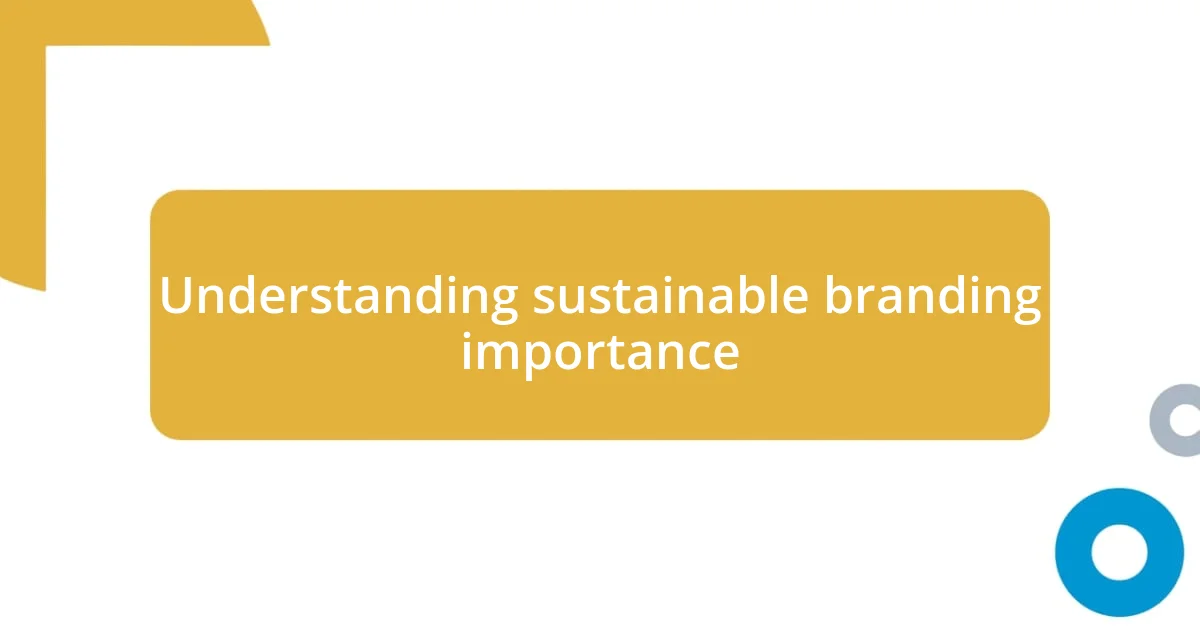
Understanding sustainable branding importance
Sustainable branding has become increasingly important as consumers seek brands that resonate with their values. I remember a time when I purchased a product purely based on its aesthetic appeal, only to feel a pang of guilt later, realizing the environmental harm caused during its production. This experience begs the question: can we truly feel good about our purchases if they negatively impact the planet?
When a brand prioritizes sustainability, it not only meets the ethical demands of today’s consumer but also establishes a deeper emotional connection. I’ve found that when I align my buying choices with responsible brands, it gives me a sense of purpose. It’s almost like being part of a community that cares about the broader picture, which ultimately leads to brand loyalty that transcends mere transactions.
Moreover, brands that embrace sustainability often stand out in a crowded marketplace. I recall discovering a local clothing brand that uses recycled materials; their unique story made the purchase feel special. Isn’t it inspiring to support a brand that not only creates beautiful products but also contributes positively to our world? This sense of empowerment we feel from such choices is a powerful testament to the importance of sustainable branding.

Key principles of sustainable branding
Sustainable branding hinges on authenticity. When a company honestly represents its values and practices, it cultivates trust with consumers. I remember feeling reassured when a personal care brand I loved openly shared its sourcing methods. It felt like we were on this journey together, advocating for a better world.
Another essential principle is transparency. Companies must provide clear information about their supply chains and production processes. I once came across a food brand that detailed the impact of its farming practices on the environment. It was refreshing to see a brand lay out the facts so clearly, and it made me reconsider my choices in the grocery aisle.
Lastly, engagement with the community amplifies the impact of sustainable branding. I had the chance to volunteer with a local initiative supported by a sustainable apparel brand. Participating in their efforts fostered a genuine connection with the brand, showing that they aren’t just focused on profit but are dedicated to effecting real change. This level of involvement encourages loyal customers who feel a part of something larger than themselves.
| Principle | Description |
|---|---|
| Authenticity | Honest representation of values and practices to build trust. |
| Transparency | Providing clear information about supply chains and production processes. |
| Community Engagement | Active involvement with local initiatives to foster genuine connections. |
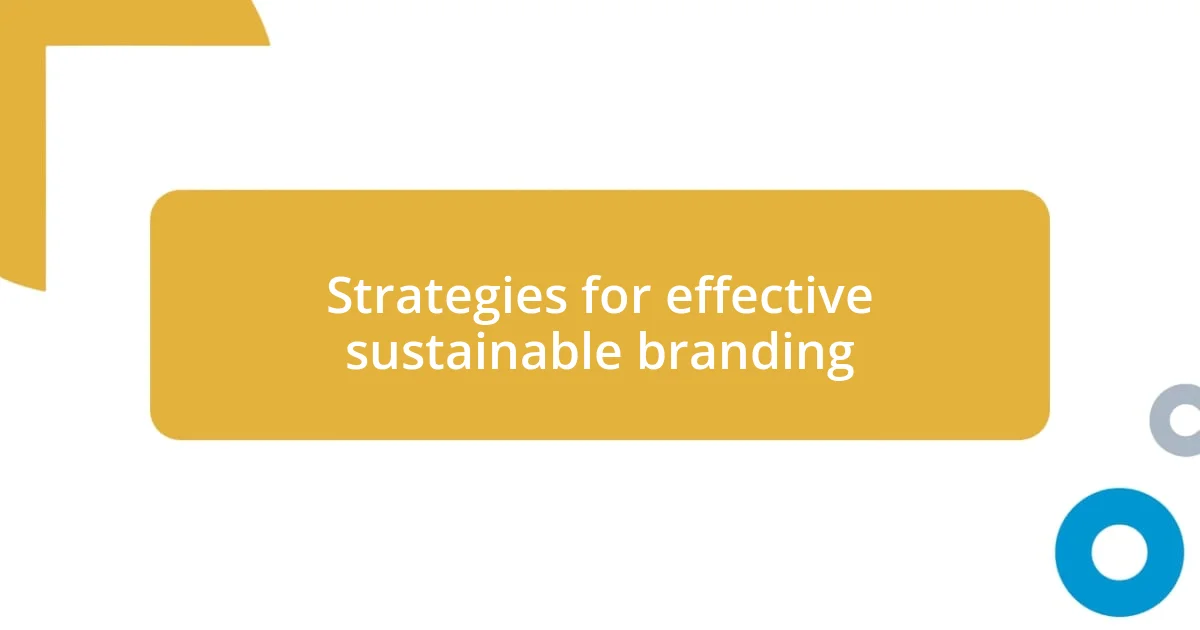
Strategies for effective sustainable branding
When I consider effective strategies for sustainable branding, I think about how crucial storytelling is. A brand that weaves a narrative about its sustainable journey can captivate consumers and make them feel invested. I remember being engrossed in a documentary about a furniture company that sources wood from responsibly managed forests. Their story resonated with me, turning a simple purchase into an emotional experience.
Here are some strategies that stand out in the realm of sustainable branding:
- Develop a Compelling Brand Narrative: Share relatable stories that highlight the company’s commitment to sustainability.
- Incorporate Eco-friendly Practices: Implement sustainable production methods and communicate these efforts to consumers.
- Cultivate Community Involvement: Partner with local organizations and get customers involved in sustainability initiatives.
Leveraging social media also plays a pivotal role. For instance, I follow a skincare brand that uses Instagram to share behind-the-scenes glimpses of their eco-friendly practices. It’s engaging and fosters trust, allowing me to feel a connection that goes beyond just the product. I genuinely appreciate how brands that utilize these platforms can break down barriers and invite us into their world. It’s not just about a product; it feels like an invitation to be part of a collective effort for change.
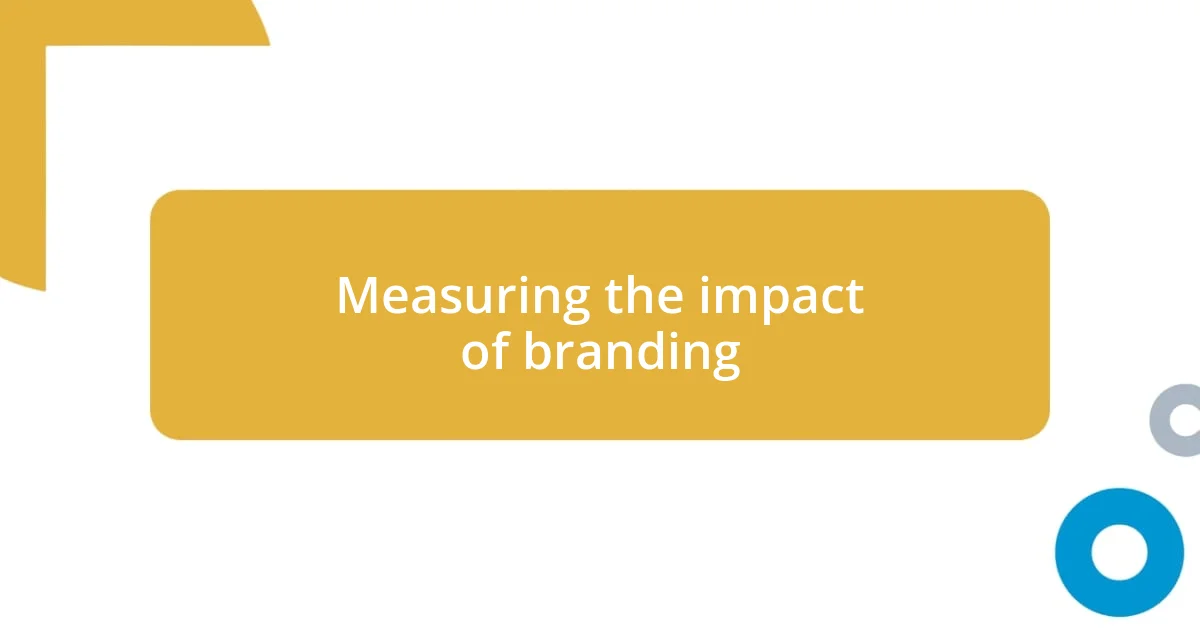
Measuring the impact of branding
Measuring the impact of branding is more than just tracking sales; it’s about understanding how consumers connect with a brand’s message. I recall a time when my favorite outdoor gear company shared results from a customer survey that demonstrated how their sustainability practices resonated with their customers. This insight wasn’t just numbers; it showed how deeply people cared about the values behind the brand.
Furthermore, I’ve noticed that social media engagement is a powerful indicator of branding effectiveness. For example, one eco-conscious clothing brand I follow regularly shares customer testimonials showcasing their commitment to sustainability. When I read those stories, I felt inspired and acknowledged the brand’s true impact on my purchasing decisions. These real voices reflect a stronger connection that transcends traditional marketing metrics.
Lastly, brands can benefit from analyzing changes in consumer behavior over time. I’ve experienced firsthand how a brand’s commitment to sustainability influenced my decisions. I find that when I see a brand consistently advocating for eco-friendly practices, my willingness to support them grows significantly. Isn’t it fascinating how collective awareness and alignment with values can transform our buying habits? Brands that embrace this knowledge can truly shape a better future.
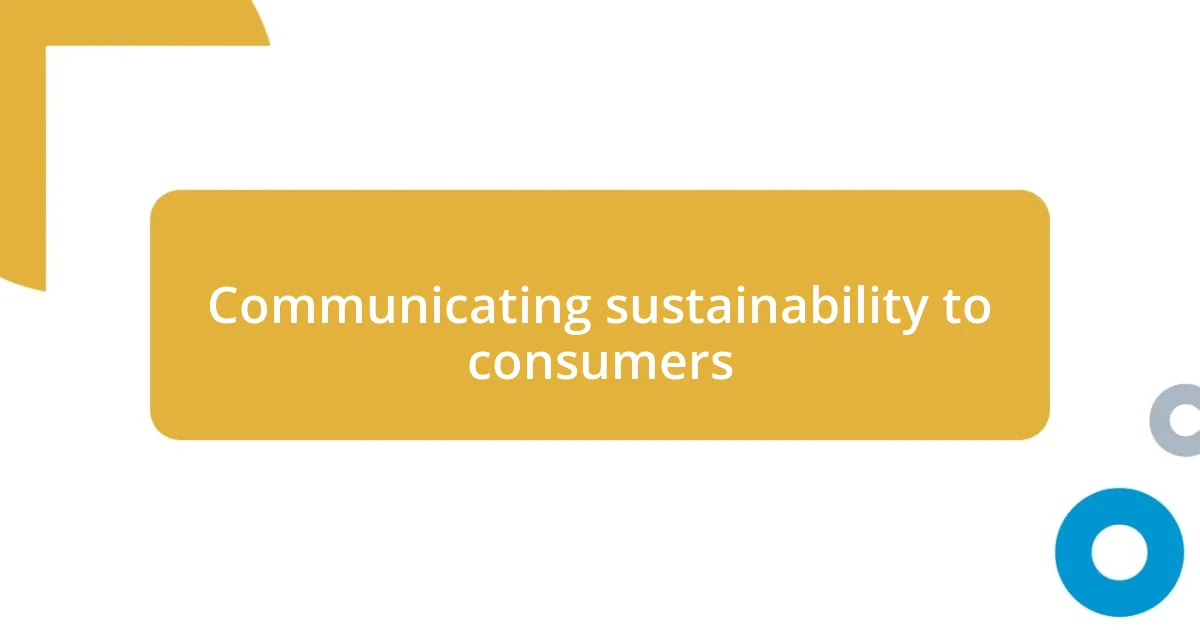
Communicating sustainability to consumers
When I think about communicating sustainability to consumers, one thing that comes to mind is transparency. I remember when I first encountered a beverage company that detailed their sourcing practices right on the packaging. It felt refreshing to see how they openly discussed their use of recycled materials—something that made me feel proud to support them. Can you imagine the impact of a brand that gives you the story behind every sip?
Building a dialogue with consumers is also vital. I recently attended a virtual panel hosted by a sustainable fashion brand. They encouraged questions and shared specific challenges they faced in their eco-journey. This openness not only fostered trust but also made me feel like I was part of the solution. Have you ever felt more connected to a brand after hearing their struggles and triumphs?
Utilizing visual storytelling can make a significant difference in how a message is received. For instance, I stumbled upon a video series from a local food co-op showing farmers using regenerative agriculture techniques. The stunning visuals combined with authentic narratives drew me in, and I found myself emotionally invested. Isn’t it incredible how a simple video can transform a brand’s image, making sustainability feel less like a buzzword and more like a movement?

Case studies of successful brands
One compelling case study that stands out to me is Patagonia. Their steadfast commitment to environmental activism isn’t just a marketing facade; it’s woven into the fabric of their identity. I remember hearing about their “Don’t Buy This Jacket” campaign, which encouraged customers to think twice before purchasing. That kind of honesty struck me deeply—it’s rare to see a company prioritizing the planet over profits. How many brands would risk sales for such a powerful message?
Another example is The Body Shop, which has long championed ethical sourcing and fair trade. I was inspired when I discovered their Community Trade program, which supports artisans around the globe. It’s heartening to know that by choosing their products, I’m also contributing to livelihoods in communities far away. Isn’t it fascinating how a brand can create a ripple effect of goodwill through sustainable practices?
Lastly, look at Tesla—a brand that has redefined the automotive industry with its focus on electric cars. When I first learned about their mission to accelerate the world’s transition to sustainable energy, I felt a surge of hope. Their innovative spirit both excites and challenges the traditional auto market. How amazing is it to witness a brand not just selling cars, but genuinely pushing for a greener future?
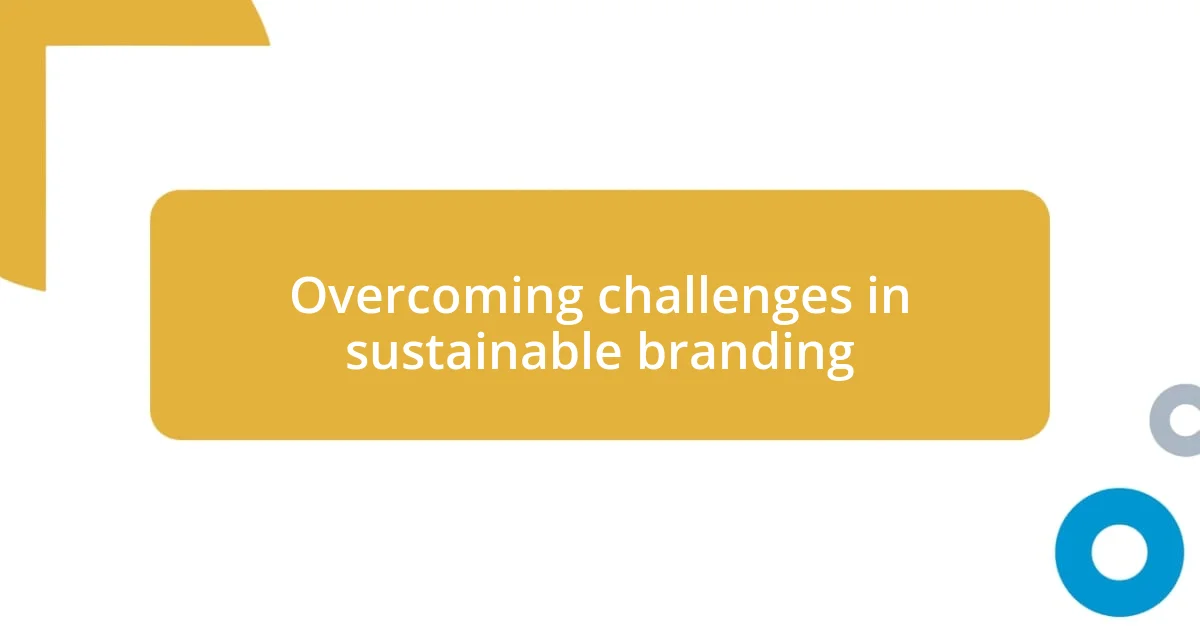
Overcoming challenges in sustainable branding
Sustainable branding isn’t without its hurdles, and I’ve seen this firsthand in various discussions with eco-conscious business owners. They often mention the steep costs associated with sourcing sustainable materials. I recall a friend who runs a local eco-friendly shop sharing how challenging it was to find responsible suppliers who maintained ethical standards while also keeping prices competitive. Isn’t it staggering to think that sometimes, the right choice for the planet can feel like a financial burden?
Another challenge that often surfaces is consumer skepticism. I remember a time when I hesitated to buy from a brand that claimed to be sustainable. I thought, “Are they really making a difference, or is this just greenwashing?” This feeling is common; potential customers scrutinize claims out of fear of being misled. Brands must not only establish credibility but also actively engage audiences with compelling stories that show their genuine commitment to sustainability. How can they bridge that gap and transform doubts into trust?
Moreover, navigating regulatory standards can be a daunting task for brands aiming for sustainability. I’ve seen start-ups grapple with compliance while trying to maintain their eco-friendly ethos. For example, I spoke with a founder who was overwhelmed by constantly changing regulations on packaging materials. It’s a lot to juggle, isn’t it? But facing these challenges with perseverance often leads to innovative solutions, which ultimately strengthens brand identity and consumer loyalty.














